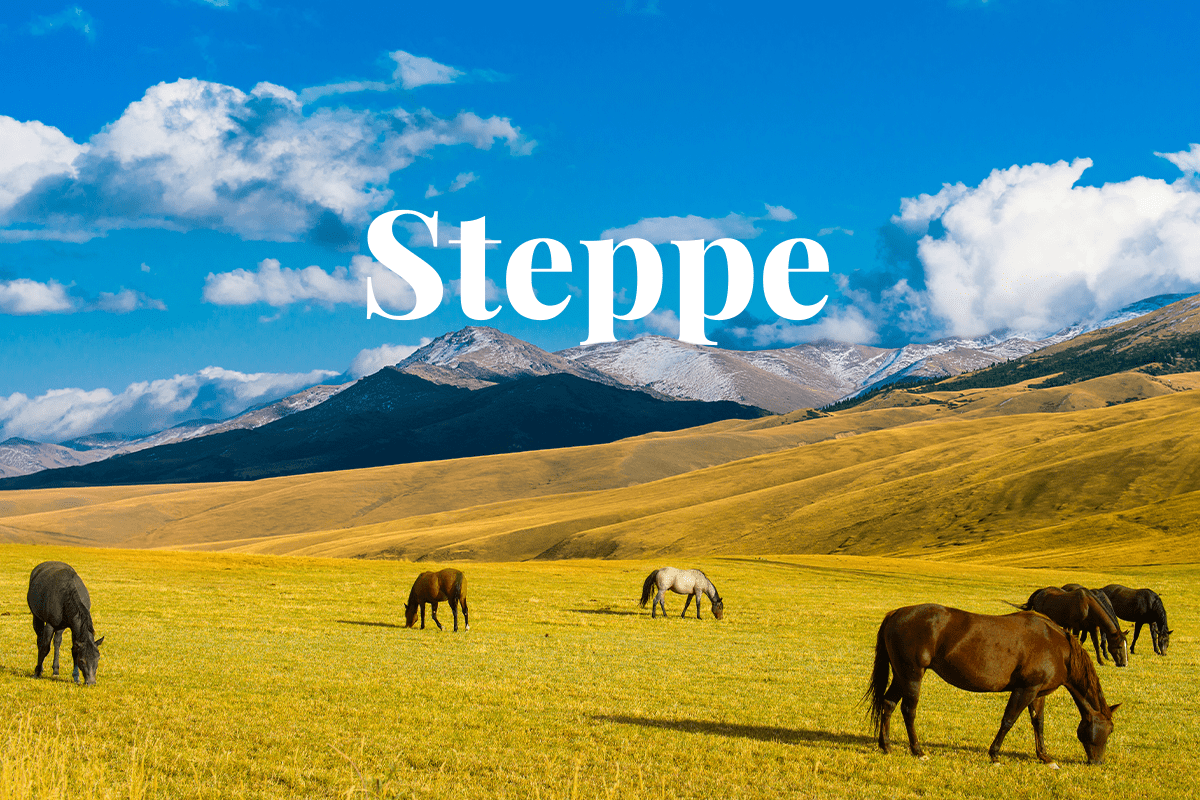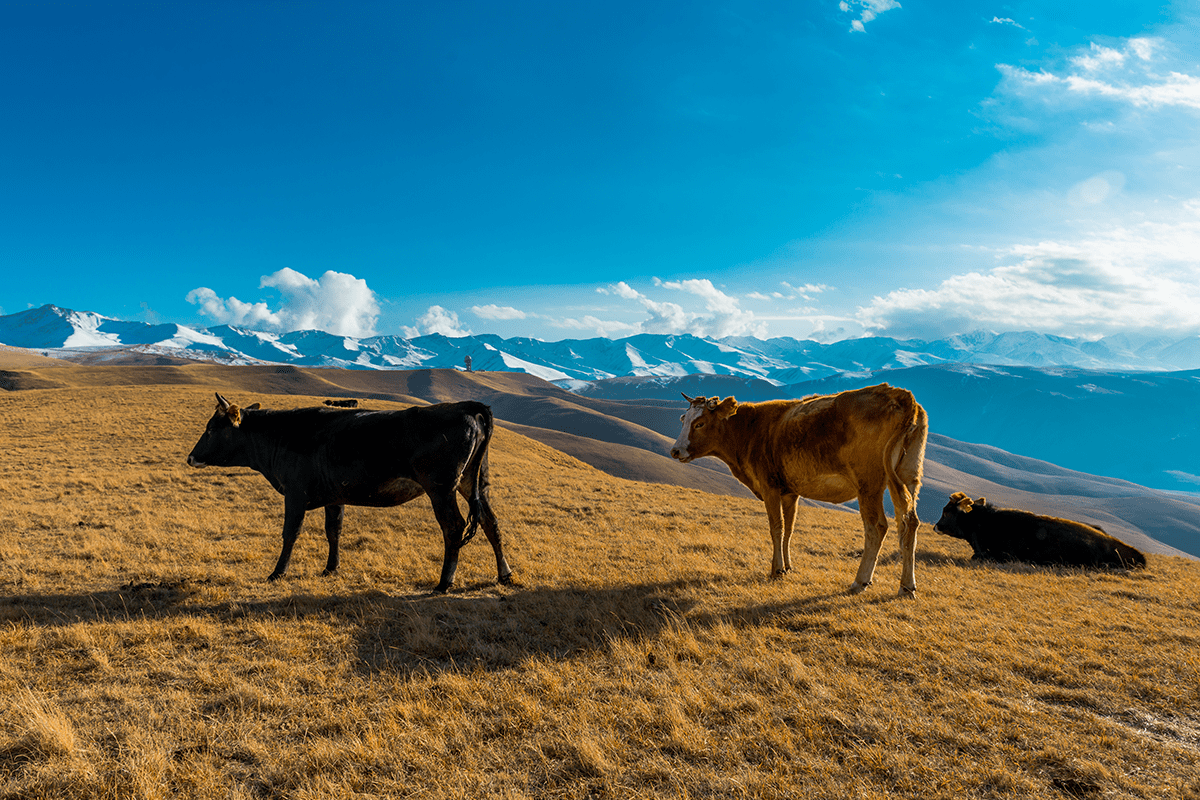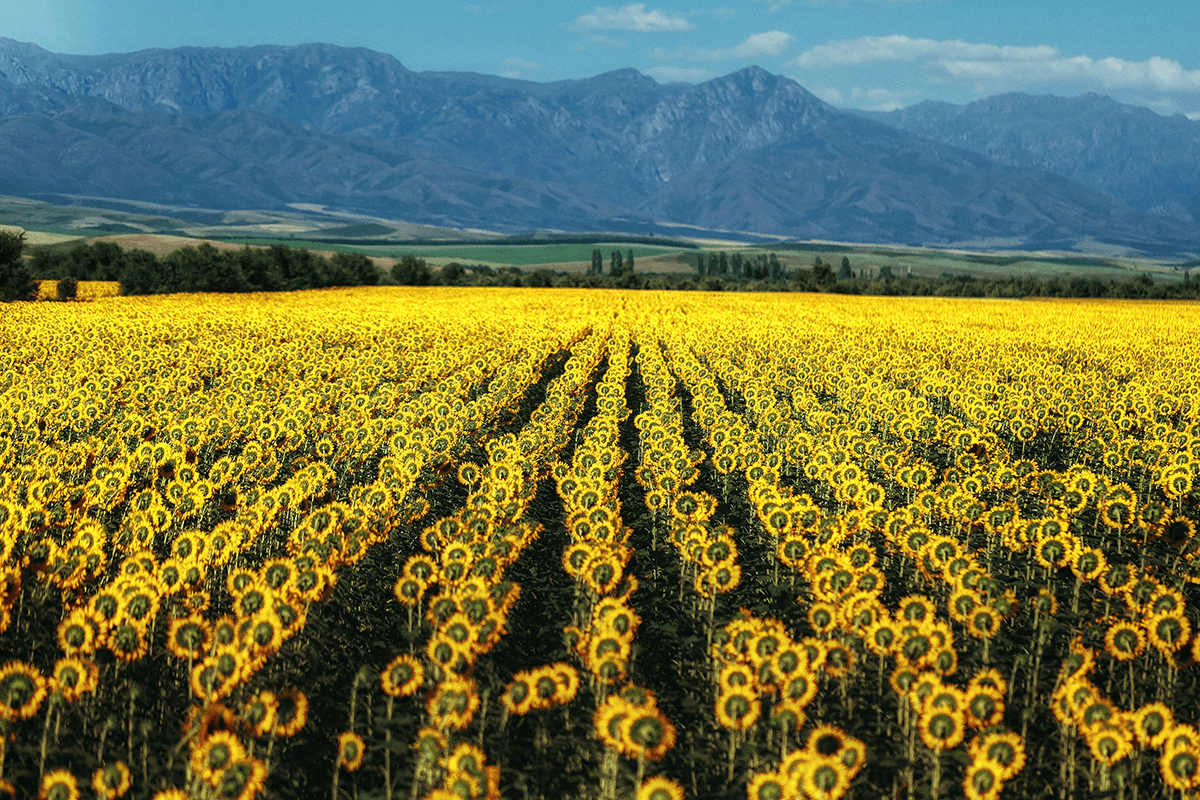Kazakhstan, with its vast steppes and diverse ecosystems, is a land of stunning natural beauty and incredible biodiversity. But did you know these ecosystems also play a crucial role in supporting the country's agricultural industry? From the grazing of millions of livestock to the cultivation of essential crops, the steppe ecosystems of Kazakhstan are an essential part of the country's economy and way of life. This article will explore the fascinating ways these ecosystems support Kazakhstan's agricultural industry and discuss the urgent need to preserve them for future generations.
 Horses in Kazakhstan steppe, near Almaty city.
Horses in Kazakhstan steppe, near Almaty city.
What are steppe ecosystems?
Steppe ecosystems are vast grasslands that cover large areas of Eurasia, including parts of Kazakhstan. These ecosystems are characterised by their rolling hills, wide-open spaces, and diverse array of plant and animal species. Unlike other types of grasslands, which are often dominated by tall grass species and trees, steppe ecosystems are usually characterised by short-grass species, as well as a variety of shrubs and herbs. The steppe is also an ideal habitat for many grazing animals, such as horses, cattle, and sheep, which have been a part of Kazakhstan’s agricultural economy for centuries.
Read more: 5 Types of ecosystems and what makes them unique
Grazing livestock in steppe ecosystems
Grazing livestock has been a traditional way of life in Kazakhstan for centuries. It remains an essential part of the country's economy today. In fact, Kazakhstan is one of the world's largest producers and exporters of livestock, including sheep, goats, and cattle. The country is home to over 20 million cattle, 12 million sheep, and 1.3 million horses. The steppe ecosystems provide abundant pastureland for these animals to graze on, and this grazing benefits the animals and the ecosystem itself.
For one, grazing livestock helps maintain the natural balance of the steppe ecosystem. The animals walk on and fertilise the soil, which promotes the growth of native grasses and other plants. This, in turn, provides food and shelter for other animals, such as birds and small mammals, which play an important role in the ecosystem.
Moreover, the grazing of livestock is a crucial source of income for many rural communities in Kazakhstan. Small-scale livestock farming is an essential way of life for many families, providing a vital source of food and income. Grazing livestock also supports other industries, such as meat processing and leather production.
 Cows in a pasture, Kazakhstan.
Cows in a pasture, Kazakhstan.
How can DGB help your land prosper? Find out here.
Cultivating crops in steppe ecosystems
While the steppe ecosystems of Kazakhstan are often associated with livestock grazing, they also provide a vital environment for cultivating crops. In fact, agriculture is one of the largest sectors of the country's economy, and the steppe ecosystems are a crucial part of this industry.
The steppe ecosystems of Kazakhstan are characterised by their continental climate, which features hot summers and cold winters. Despite the harsh conditions, farmers in the region developed a range of agricultural practices that allowed them to grow crops such as wheat, barley, and sunflowers.
One of the key advantages of cultivating crops in steppe ecosystems is the abundance of fertile soil. The grasslands of the steppes are rich in organic matter, which can promote crop growth. In addition, the region’s dry climate means diseases and pests are less of a problem for farmers.
Another benefit of cultivating crops in steppe ecosystems is the relatively low cost of production. The open terrain allows for large-scale mechanised farming, reducing labour costs and increasing efficiency. The use of modern technology, such as precision agriculture techniques and GPS-guided machinery, has also helped to improve yields and reduce waste.
 Landscape with sunflowers, Kazakhstan.
Landscape with sunflowers, Kazakhstan.
Preserving steppe ecosystems
Aside from the economic benefits that steppe ecosystems provide, these ecosystems also play a crucial role in maintaining ecological balance. The steppe ecosystems of Kazakhstan are home to many unique and diverse plant and animal species. These ecosystems act as habitats for these species, providing them with the necessary resources to survive and thrive.
One of the key challenges facing steppe ecosystems in Kazakhstan is the loss of biodiversity. As grazing and farming practices intensified in recent decades, many native plant and animal species have been pushed to the brink of extinction. This loss of biodiversity can have a range of negative impacts, including reduced soil fertility, increased susceptibility to pests and diseases, and a decline in the quality of ecosystem services.
To address this issue, policymakers and farmers in Kazakhstan are working together to develop more sustainable practices that prioritise preserving ecological balance. This includes efforts to promote the use of traditional grazing techniques, which help maintain soil health and support the growth of native plant species. It also involves adopting more sustainable farming practices, such as crop rotation, which can help reduce soil erosion and improve soil fertility.
Another key strategy for preserving steppe ecosystems is to protect the natural habitats of native plant and animal species. This can involve creating wildlife reserves and protected areas, as well as promoting the use of agroforestry and other techniques that restore damaged ecosystems. Efforts to promote using renewable energy sources and reduce carbon emissions can also mitigate the impact of changing environmental conditions on steppe ecosystems.
You can start making a change for the better too: plant a tree with DGB
The importance of steppe ecosystems
The steppe ecosystems of Kazakhstan are not just beautiful and ecologically important—they are also critical to the country's economy and food security. The grazing of millions of livestock and the cultivation of essential crops all rely on the health of these ecosystems. However, human activities such as overgrazing and mining threaten to degrade and destroy these precious habitats. It is therefore vital that these important ecosystems are protected.
DGB Group’s commitment to protecting biodiversity
At DGB Group, we strongly believe in the importance of preserving ecological balance and protecting ecosystems all over the world. Our nature-based solutions help restore biodiversity and degraded land and support rural communities that rely on these ecosystems for their livelihoods. By working together with policymakers, farmers, and other stakeholders, we can ensure that these ecosystems continue to provide vital resources and services for generations to come.
Get in touch with our experts for more details



